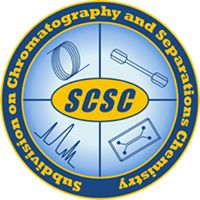The LCGC Blog: Chromatography Resources for Online Learning
The technology and resources available in this digital world have really pushed the way that we can (and now may have to) teach.

This blog is a collaboration between LCGC and the American Chemical Society Analytical Division Subdivision on Chromatography and Separations Chemistry.
In mid-May, I was lamenting to a colleague about the volume of work that we had done to finish the semester after going completely online. I work at a small primarily undergraduate institution (PUI) where online courses are normally unheard of. We had transitioned our lectures to podcasts, our exams to shorter online quizzes, and our laboratories to mostly data analysis and interpretation. It wasn’t the same experience, but we made it work, as many academics did this spring. That abrupt and unanticipated shift could have been much worse though. In fact, as my colleague and I were patting ourselves on the back for getting it done, we also realized that what we accomplished couldn’t have happened in nearly the same way 20 years ago, or 10, or maybe even five for that matter. When I first joined the college just over ten years ago, for example, I was the only instructor in my department to annotate PowerPoint notes on a tablet computer. Just this semester, I had several students using tablet devices to take notes in class. The technology and resources available in this digital world have really pushed the way that we can (and now may have to) teach.
Many academics will again be faced with the challenge of going online or teaching in a hybrid fashion (part online and part physically distanced in-person). That means students will either not get the in-laboratory hands-on training we have come to expect, or they will have fewer opportunities to develop those skills. While I might be slightly biased as an analytical chemist, I consider Instrumental Analytical Chemistry one of the most important classes for chemistry-major students that go on to graduate school or chemical industry. Even if my students are dead set on organic synthesis, I see my job as getting them to appreciate the instruments they will be using to guide their research. Teaching remotely brings new challenges to developing their analytical skills. And even universities that opt to have in-person classes and laboratories will face new challenges related to physical distancing requirements. For example, the space may only allow a third or half of the normal number of students. How then, can we make the most of these scenarios?
I am teaching my upper-level Instrumental course this fall and have been poring over ideas for how I can incorporate more skill-development into remote learning or limited in-person experiences. Here, I will tell you about some of the learning modules and resources I am planning to use in my course that relate to chromatography. My separations unit is toward the end of the semester and will need to be modified due to a shortened in-person semester. I also worry we won’t get to these laboratory sessions in-person at all, given that the shift to entirely remote classes is not off the table (thanks a lot, COVID). The activities and resources I present here can be used remotely as well as in-person, and with their inclusion in my course design, will take a little pressure off of me trying to plan for two possible end-of-semester scenarios. I should also note that I imagine these resources would be helpful to new chromatography hires working in various industries.
I have been using active learning in my general chemistry classes for a few years, and began using more of this pedagogy in my instrumental course in my latest offerings. I plan to continue to use active learning activities while teaching remotely this fall.
There are a number of really great (free) resources available on the Analytical Sciences Digital Library (ASDL) active learning webpage (1). One of these is provided by Professor David Harvey of DePauw University. His interactive introduction to chromatography walks students through basic chromatographic theory via a series of detailed investigations (2). For example, students can easily measure the difference in peak width when a different number of theoretical plates is in play. Additionally, variables in the Purnell equation that affect resolution (k, alpha, N) can be toggled to instantly view the effect they have on the resolution between two chromatographic peaks. Students are prompted by a thorough, yet easily digestible background and pointed questions, and can work through these ideas on their own timeline either in or outside of class.
Along similar lines, I recently learned about a robust high performance liquid chromatography (HPLC) simulator, maintained by Professor Dwight Stoll of Gustavus Adolphus College (and a regular columnist for LCGC), that allows selection of many various real analytes and mobile phases, as well as typical injection, flow, and column properties (3). These simulators will be invaluable tools for my students to gain an understanding of chromatographic theory and to see the effects of physical, real changes in separation parameters, all without requiring an in-person laboratory.
Another really nice activity that I found on the ASDL active learning site is a guide to environmental analysis using the Lake Nakuru flamingos (4). In the early 1990s, thousands of the Lake Nakuru flamingos died; heavy metals and organochlorine pesticides were found in various flamingo tissues. In this active learning module, students must research which analytical methods would be most appropriate for the analysis of pesticides. Instructors guide students through the areas of sampling, sample preparation, gas chromatography, mass spectrometry, and method validation using an EPA method. Metal analysis can also be investigated using a variety of non-chromatographic instruments. Again, using this tool, no laboratory access is needed to gain much skill regarding experiment design, instrument theory, and data analysis.
At the end of my separations unit, as a summary activity, I have my students create a separations flow chart. I ask them to lay out the steps for choosing an appropriate separation method and detector to try to accommodate as many analytes as possible. This process requires the students to reflect on what each method does and how, as well as why someone would choose a given column and detector. One year my students were so excited about this activity, they asked to create flow charts for all of the methods discussed in the course and to have it accessible to them on their final exam. I normally provide 11x17 inch sheets of paper and have them work in small groups to start. Perhaps this year I will use larger, poster-sized post-its and we’ll post them around our enormous physically distanced lecture hall. A number of these types of shorter active learning activities can also be found on the ASDL active learning site and could easily be adapted for remote learning (5).
I also realize the importance of and need for a variety of learning materials for my students. Office hours may be limited to Zoom meetings, and students could have reduced access library resources and textbooks. Thus, the need for students to turn to the web for answers may increase. I have noticed that in recent years, students growing up in our digital world will first go to the internet with questions. Even I have carefully searched through figures from the web to find just the right instrumental layout to use in my notes or on an exam question, or to consider an explanation in a different way. Some of these figures are very well done, but others are lacking or just plain wrong. In fact, last year I found a diagram labeled as an atomic emission spectrometer containing a hollow cathode lamp and a plot labeled “atomic absorbance.” I used this as an exam question to ask a type of “what is wrong with this picture?” question. I had a student admit afterwards they had used the figure to study and thus didn’t find anything wrong with it. With so many websites out there, it becomes important to know just which resources are good ones.
One resource I have found to be valuable through my years of teaching Instrumental and my upper-level elective courses is ChromAcademy (6). I have used it as a resource for well-done figures and helpful animations to show my students. ChromAcademy is available for academics—and their students—for free! Instructors can create their own bundles of notes called “Learning Paths” and share them with students. These bundles contain not only the figures, but also textbook-like descriptions of instrumental theory, as well as animations that help students grasp concepts with motion. There are a number of Learning Paths that instructors can access and modify for their own use. An instructor can simply choose a module at a time, or even just a figure or animation. There are many great separations modules and even modules for various spectroscopies (ultraviolet, infrared, atomic absorption, and so on)! Some modules cover theory, like videos showing how different particle sizes lead to different peak widths, while others cover technical aspects, like choosing a gas for gas chromatography (GC) or optimizing settings for a diode array detector. With the growing cost of textbooks, the increasing need to provide high quality resources to my students, and the challenge of remote instruction, I am eager to incorporate more ChromAcademy resources into my course design.
The fall semester will continue to pose challenges for instructors, whether we are on campus or off. I hope these resources help a few folks still looking for ideas for teaching instrumental analytical chemistry courses remotely this year. At the end of this year, I hope we are not lamenting, but rather excitedly discussing, what we were able to do despite remote restrictions.
Academics out there: What challenges are you facing? What resources will you be using? I would love to hear about your ideas and how you will be modifying your plans in the face of online learning.
Instrument manufacturers out there: What do you have for us academics to use? How can we engage our students in your products to better prepare them for life after college?
This pandemic has changed our normal. Let’s all approach it by asking, how can it change our normal for the better?
Disclosure:
I had the pleasure of reviewing ChromAcademy as a member of the American Chemical Society Subdivision on Chromatography and Separations Chemistry (ACS SCSC). The ACS SCSC vetted many of the chromatography modules and videos and has recently partnered with ChromAcademy. The review contained here is mine alone, and I am truly thrilled that ChromAcademy is available for academics and our students.
References
- http://community.asdlib.org/activelearningmaterials/, accessed 7.20.2020
- http://community.asdlib.org/activelearningmaterials/introduction-to-chromatography/, accessed 7.20.2020
- http://www.multidlc.org/hplcsim/hplcsim.html, accessed 7.20.2020
- https://community.asdlib.org/activelearningmaterials/environmental-analysis-lake-nakuru-flamingos/, accessed 7.20.2020
- https://community.asdlib.org/activelearningmaterials/activities/, accessed 7.20.2020
- https://www.chromacademy.com/, accessed 7.20.2020

Amber Hupp is an Associate Professor of Chemistry at the College of the Holy Cross in Worcester, MA. She earned her B.A. from Kalamazoo College and her Ph.D. in Chemistry from Michigan State University, under the guidance of Professor Victoria McGuffin. Amber enjoys teaching a wide range of courses including Environmental Chemistry, General Chemistry, and Instrumental Analysis. Her research group utilizes gas chromatography and a range of chemometric methods to understand the fatty acid methyl ester content in biodiesel produced from different feedstocks as well as in biodiesel diesel blended fuels. She has served as an executive board member of the ACS Subdivision on Chromatography and Separations Chemistry (SCSC) for several years and is the current chair elect.

This blog is a collaboration between LCGC and the American Chemical Society Analytical DivisionSubdivision for Chromatography and Separations Chemistry (ACS AD SCSC). The goals of the subdivision include:
- promoting chromatography and separations chemistry
- organizing and sponsoring symposia on topics of interest to separations chemists
- developing activities to promote the growth of separations science
- increasing the professional status and the contacts between separations scientists.
For more information about the subdivision, or to get involved, please visit https://acsanalytical.org/subdivisions/separations/.

.png&w=3840&q=75)

.png&w=3840&q=75)



.png&w=3840&q=75)



.png&w=3840&q=75)